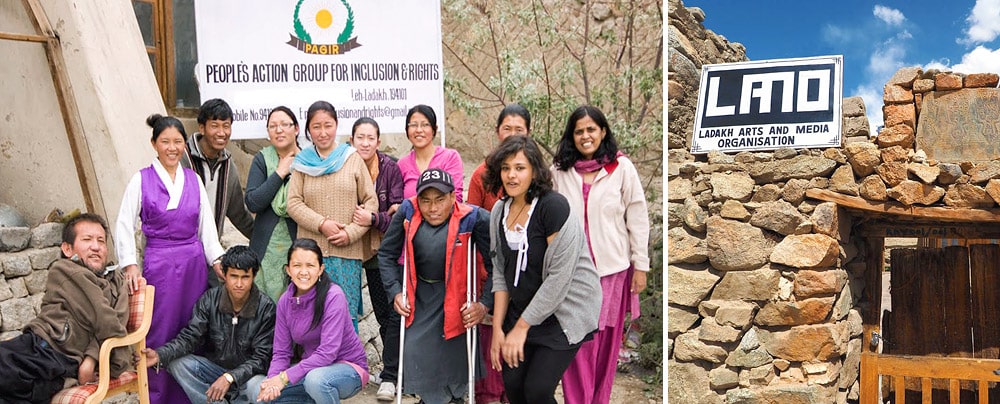Ladakh being a cold desert, having less vegetation cover, is mostly dependent on tourism for the livelihoods of its people. Since 1974, the Government of India has encouraged tourism activities in Ladakh, making it open for people from around the world. The Bollywood movies like ‘3 idiots’, ‘Lakshya’ ‘LOC Kargil’ and so on have made it easy for people to know about this isolated place which remains detached from mainland India for more than five months in winters. Since then Ladakh has fascinated much more people than its delicate environment can handle.
Ladakh became a tourist destination because of its scenic landscape, unexplored trekking regions, monasteries and unique flora and fauna. It attracts people not only from India but from all over the globe. Over the decades the same beauty and the distinctive features have brought the bane with the boon for the locals to be reckoned with.
For the last two decades, Ladakh has seen a drastic change in everything. The modernity and the tourist influx have made a huge impact on its environment. People have started building hotels in surprising number, making it hard for the environment. The rooms in hotels have attached bathrooms which have a running-water functionality round-the-clock. The scarcity of water in the region is already taking a toll on people. And, to meet the requirements, bore-wells have been dug to extract the groundwater. Furthermore, deforestation and clearing of lands for the construction of hotels has brought destruction to the environment when we already have a lesser amount of greens.

Another major issue that the city deals with is the gigantic amount of garbage. No doubt that the tourist boom has brought employment and lots of opportunities to the people but it has also drained the scanty natural resources. It has been reported that more than 30,000 plastic bottles are dumped in the city garbage area daily in summer. The jillion of plastic waste continues to inundate Ladakh as mounting garbage made the locals anxious of the future.
In this backdrop, sustainable tourism in Ladakh as a concept is catching up real fast. And, on part of an individual tourist as well, you can plan for an eco-friendly, low budget, non-regrettable and meaningful vacation, which helps in promoting responsible and sustainable tourism and making every place a better place to live.
There are certain things that you could follow and keep in mind while travelling to places in Ladakh, while being sensitive about the fragility of the environment. Here, we are providing a bite-size chunk of ‘to-do (or not-to-do) list’ while you are in Ladakh. Through this post, we attempt to assist you in leaving not a single mark of your journey, except for your generosity, appreciation and love for Ladakh, her nature and people. Are you game?
Save water
Ladakh is a cold desert with less of 100 millimetres of rainfall per year. Water supply in Ladakh mainly comes from glaciers. Climate change is making the glaciers recede leading to acute water shortage. To tackle this problem, innovator engineer Sonam Wangchuk developed the concept of “Ice Stupa.” These artificial glaciers store water that goes unused in winter which can be used in spring instead upon its melting.
However, the shortage of water is not only the consequence of global warming. A tourist in Ladakh uses on an average of 75 litres of water per day, compared to 21 litres per day for a local. In order to cater to the water needs of the tourists, many hotels in Leh have drilled private bore wells which affect the groundwater table. Hotels and guesthouses have now started encouraging tourists to save water and take short showers. They have also started using again the Ladakhi traditional dry toilets instead of flush toilets.
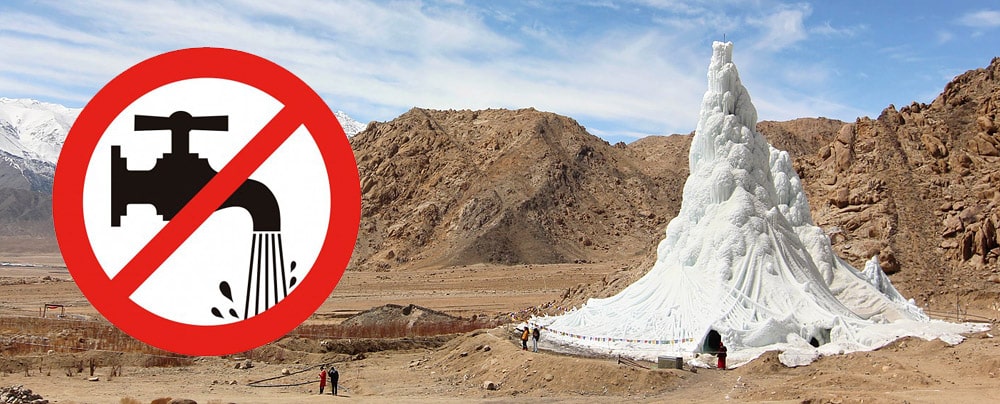
Do not buy bottled water & reduce trash
Tourists also tend to consume a lot of packaged food and bottled water. All these products are imported in from as far as a thousand kilometres away. The carbon footprint of any packaged food or water bottle consumed in Ladakh is double or triple of what it is normally. Due to the influx of tourists, several thousands of plastic bottles and food packaging items are thrown away each day in summer. Ladakh waste management infrastructures are not sized to handle the tons of garbage generated during the tourist season and there is no facility for recycling.
Therefore, tourists are encouraged to avoid buying water bottles as much as possible. Instead, you can have reusable steel bottles which can be refilled. In Leh centre, you can refill your bottles with filtered mineral water from Dzomsa shop (Zangsti Road, near Main Bazar), this is a cheaper and eco-friendly option which can help cut down on waste. Moreover, upon visiting the villages, you will find clean water sources. It’s both advisable and savvy to carry your own bottles and refill them when required. Do you know, a person can help reduce, on an average, 5 bottles from being trashed daily?

Use the local dry toilets
In Ladakh, the composting or dry toilets have been in use since time immemorial. Keeping with the environmental and sustainability needs of the region, its design is not only eco-friendly and uses a lot less water but also produces organic manure for the fields. This traditional toilet is an example of the ingenuity of our forefathers. The two-storied structure consists of the toilet at the first-floor and the composting unit underneath. The excrement rests in the ground floor section and is allowed to undergo natural decomposition; sand or soil is employed to keep the foul smell away. Once the toilet is filled, the waste is properly dried in the sun before utilized as an organic manure for agricultural purposes.
Again, the use of the local toilet is a simple yet effective solution to a lot of burning issues that Ladakh is facing today. Every household has one of these and if you are a sensitive tourist, with its regular use, you could help in water conservation, create natural manure and, most importantly, set an example for others to follow and practise sustainable living and travelling.
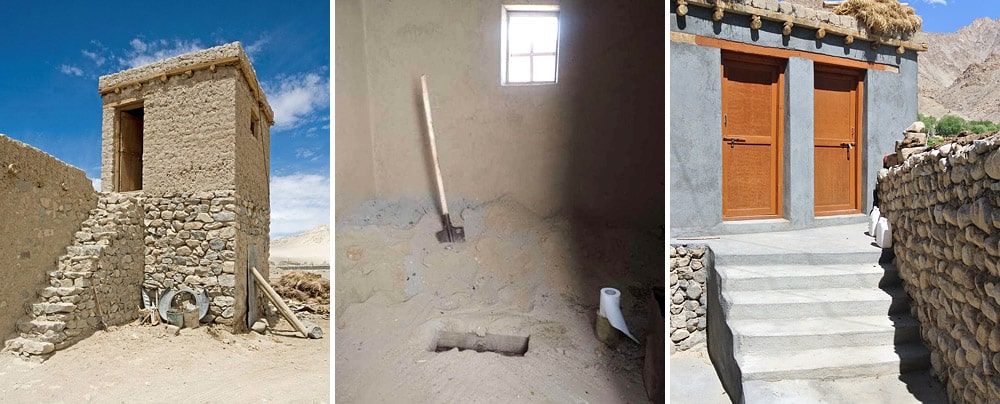
Stay in homestays with the locals
In the same spirit as above, the families in the far-flung areas of Ladakh have started offering their places to the travellers as homestays or guest houses. Thus, creating an amazing opportunity for both parties. A hiker can trek to the recess, inaccessible yet beautiful villages without being worried about the night and make a stay at any of the locals.
While the villagers benefit economically through this arrangement, the visitors get an opportunity to see and experience a different culture up-close. The tourists could live a local life for a day or two. They get to see the interiors of traditional households, savour different traditional cuisines and enjoy the famed hospitality of people of Ladakh. In fact, if you are of the kinds who let their hearts rule, you could even extend your stay. And, if your health permits, even engage with the field works, attend the livestock and experience the village life for a longer duration of time. Of course, you will need to get prior consent of the host-family.
Another important aspect of Ladakhi homestays is sustainability. As compared to big hotels, they produce lesser waste. In fact, most of their refuse materials are organic, therefore, reducing a huge economic as well as environmental overhead from the tourism industry. In a nutshell, by participating in the local economy, may it be visiting local stores, eating at local restaurants or staying at local guesthouses, you reduce your carbon footprint, contribute to the local economy and promote organic and low-impact tourism. Isn’t that a really good idea where both the visitor and the host cut a win-win deal while promoting a wholesome and sustainable tourism that could be sustained for generations to come?
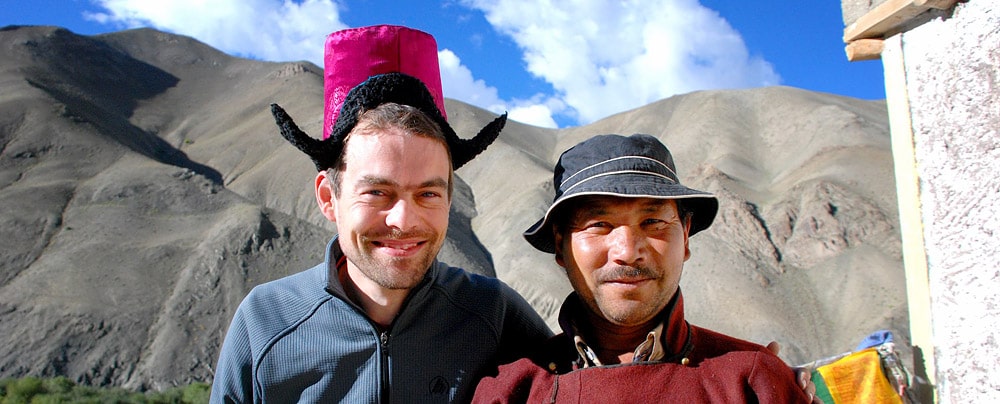
Use shared taxis
In Ladakh, your mode of transportation is again a critical issue. Global warming is anyway a concern, the exhaust from the vehicles towing tourists around the region has doubled-down its effect. Not only the fumes contribute to the concentration of heat-trapping gases such as CO2, CO or NO2 into the thin air of Ladakh, the resulting black soot also settles on the glaciers, especially, when crossing the high-mountain passes. In turn, the ice-bodies trap more heat, owing to the colour of the soot settlements. Consequently, the icy water reserves melt faster, aggravating the water-crisis. While Ladakh has experienced an average rise of 3°C in a decade with many environmental consequences, the soot from the vehicles added to the woe of the locals. Therefore, we suggest you to avail shared taxi services as much as possible. If you are a solo traveller, a couple or a small group of friends, shared taxis are an option that not only enable you to do your bid but also offer an opportunity to make new friends and meet interesting fellows along the way. To access a shared taxi service, you will have to look no further as we provide the service to most of the tourist destinations in Ladakh.
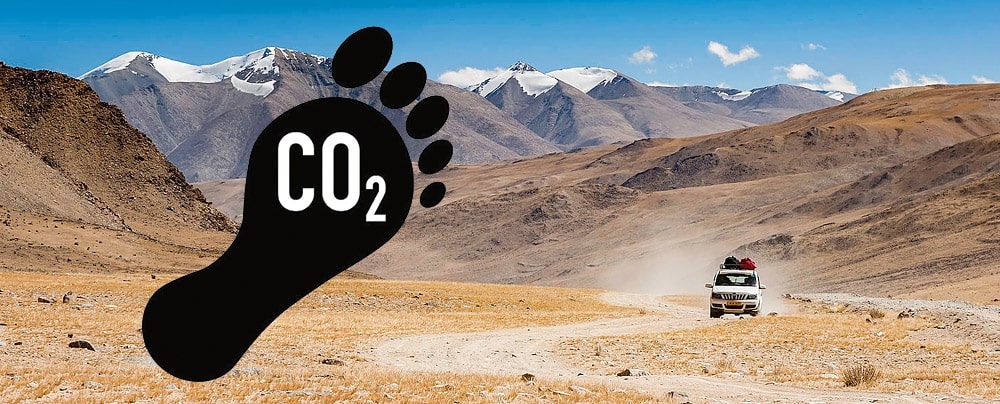
Do not disturb the wildlife
Ladakh has a different stock of wild animals that belongs to the trans-Himalayan belt. The snow leopard, brown bear, antelope, ibex, marmot and an endless number of creatures is unique to the region. However, due to the harsh conditions and poaching practices, many of them have been declared endangered species. In this backdrop, wildlife tours could help in its protection, sustenance and promotion.
With this as objective, snow-leopard oriented tourism has developed in the recent years. However, that should not encourage the visitors to intrude into their natural habitats. It’s essential to maintain a good distance from the wildlife while enjoying their spectacular personality, demeanour and gait. It’s unlawful to harm the wild animals.
Also, don’t feed any packaged food to wild creatures. Many of the tourists feed the marmots on the way to Pangong Lake in Changthang. They get habituated of packaged eatables and become dependent on them for their survival. In the winters, when they can’t find such food, they are forced to leave their natural habitats which can prove dangerous in the long run.
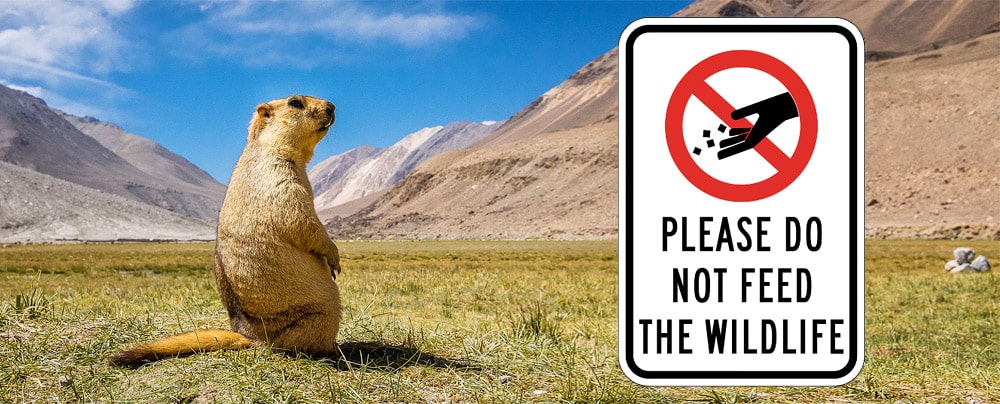
Do not scribble anywhere
We began this post with the objective of helping you leave no mark of your journey. However, it’s human instinct to have a notch or a trail behind. We like to see ours or loved ones’ names on the walls, streets or monuments. Needless to say, sullying public property is a legal offence and thus punishable, it also demonstrates a bad impression of yours in the public view. Ladakh has many monasteries with old and highly intricate but delicate wall frescos and paintings, scribbling upon them would only prove detrimental to their protection efforts. Take pictures if you like, that too with a prior permission from the caretaker of the monument or the site. Ladakh being a border area has many prohibited regions, moreover, photography (esp., with flash lights) is not allowed in many places.
Therefore, we urge you to be a responsible visitor who abides by the rules of the place. A score of monuments in Ladakh hold not only pride and value but also enshrines our cultural heritage. It is a reflection of the civilization of Ladakh hence honouring our historical sites, monuments and cultural symbols are your obligation as a guest traveller.
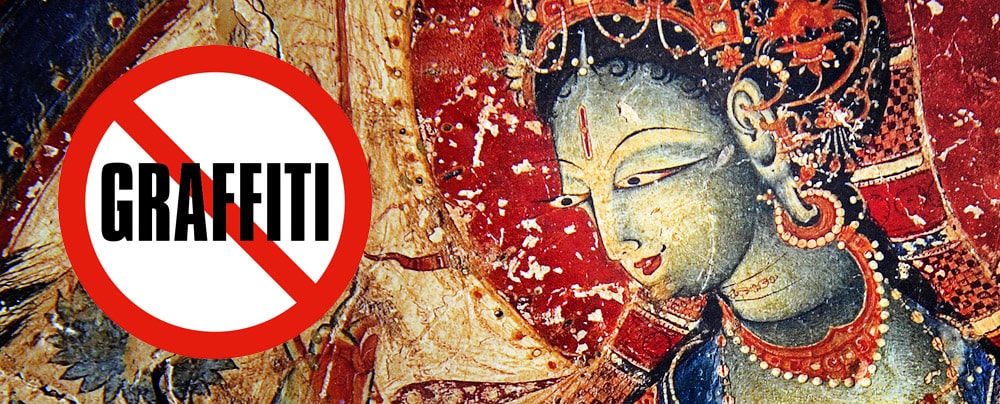
Respect the culture
Ladakh is known for its simple living and distinct culture. The people here are spiritual and believe in age-old traditional values. Our food, clothes, lifestyle, language and religions are different from the mainland India. This differences in appearance, culture and tradition from the rest of the world makes Ladakh exotic. Hence, it draws considerable attention from the larger world. Though, Leh might seem similar to the common cultured places however the villages are still typical and traditional. Wearing full-length clothes in these places is considered to be a sign of respect to the Gods and the deities. Especially while visiting the monasteries, you are expected to observe utmost sanctity and obeisance. Keeping a slow gait, sober behaviour and silence is appreciated in the places of worship and temples. The westernization might have influenced our people but hasn’t yet overtaken us completely. The traditional values still breathe in the air and you must honour and appreciate these uniqueness for which you took the whole journey to begin with.

Visit the local stores and promote ethical shopping
It makes a huge difference where your money goes, whom you buy from or transact with when you are travelling. Only a few years back, a handful of stores in Leh market sold local products. However, the nature of tourism is changing in Ladakh as we have seen a tectonic shift in the merchandise sold in the bazaar lately. The locals are getting creative and innovative. They are reviving the long lost traditional culinarians, hand-spun handicrafts and so on. Today, there is a number of stores in the market with an assorted number of choices.
For instance, you will see stores that sell organic and local products like homemade cookies, bread, milk products, teas and liquor etc. Some outlets are reviving the traditional attires with a modern twists. The wool of yak and goat, the weaving skills, the local dying techniques are being acknowledged and given importance. The new trendy Gonchas (gown), hand-woven pashmina shawls and vest jackets are being loved by locals and tourists alike. People also indulge themselves into shopping wearables with traditional touch or peculiar jewellery, decors and trinkets as souvenirs.
Therefore, when you buy from these local shops, you are not only helping the natives make a living but also promoting the traditional art, craft and resources. Such a pattern of commerce will help locals become self-sufficient and, moreover, will revive the traditional skills, know-how and technology. Thus, with a simple act of shopping from locals, you are setting a chain of activities that contributes to the host society in a myriad ways.

Volunteer with an NGO in Ladakh
In case you are visiting Ladakh for a longer period of time, then you must consider volunteering in one of the many organisations that are doing some amazing work. There can’t be a better way to experience and understand a new land and its community than volunteering in initiatives that are focused on solving local issues.
There are many NGOs and groups in Ladakh that are not only providing employment to the least preferred of the otherwise conventional society but also attempting to change certain notions and perspectives. One such Group is PAGIR (People’s Action Group for Inclusion and Right). Its vision is to make Ladakh eco-friendly and more inclusive by bringing awareness about differently-abled people in the society. Their prime objective is to make a space where people live without prejudices and waste. The organisation is actively involved in recycling and up-cycling the waste of the Leh city. They skilfully create mesh papers out of tetra packs, bags and rugs out of waste old clothes, insulator bricks out of mesh papers, bottles are being used in the construction of hostel and many such innovative utilities. At PAGIR, volunteers are always welcomed with love and respect. You could teach and help them with achieving their vision and facilitating their unique initiatives. Ladakh Nun’s Association (LNA) is another organisation working for women of Ladakh, especially nuns. Their objective is to empower and educate the nuns of the region. Ladakh Art and Media Organisation (LAMO), as the name suggests works in the field of fine Arts and Media. They are promoting the modern Art by the youth of Ladakh. Likewise, there are many organisations addressing many other aspects of the society from education, environment to culture to fit your taste.
